|
와토(바토)WATTEAU, Antoine 생애와 작품
WATTEAU, Antoine
(b. 1684, Valenciennes, d. 1721, Nogent-sur-Marne)
Biography
북프랑스 발랑시엔 출생. 1702년 파리로 나와 당시 그랑드 오페라극장의 장식화가였던 C.질로에게 배우고 이어 장식화가 C.오드랑의 조수가 되어, 주로 인물사생과 희극배우들을 스케치했다. 오드랑은 당시 뤽상부르궁의 어용화가로 일하고 있었기 때문에, 그와의 접촉으로 궁전에 있는 루벤스나 플랑드르계 명화를 접하고 감화를 받게 되었다. 그리고 그후 16세기 베네치아파에서도 영향을 받아, 점차 로코코회화의 창시자로서의 작풍을 확립해나갔다.
1717년 왕립아카데미 정회원이 된 기념으로 그린 《키테라섬의 순례》(루브르미술관 소장)으로 명성을 떨쳤는데 이 그림 속에는 와토 예술의 특색이 잘 나타나 있다. 그는 당시 베르사유궁전을 중심으로 꽃핀 화려한 왕조문화의 궁전풍속을 비롯하여 주로 프랑스 상류사회에서 펼쳐지고 있던, 밝고 우아하며 어딘지 모르게 관능적인 매력을 풍기는 풍속이나 취미에 적합한 작풍을 전개하여 ‘아연(雅宴:f泂te galante)’으로 불리는 로코코회화 특유의 테마와 정서를 확립해가고 있었다. 자연관찰에 착실하였으며, 그의 작풍을 이어받은 다른 로코코화가들에게서는 찾아볼 수 없는 풍요함이 깃들어 있었다.
육체적으로 연약했던 와토는 일찍부터 폐병을 앓아 1720년 요양차 런던에 갔다가 건강이 악화되어 다시 파리에 되돌아왔다. 그런 와중에서도 친구 제르생이 화상을 시작하였을 때, 가게의 간판그림으로 평생의 걸작 《제르생의 간판》(베를린 샤를로템부르크궁 소장)을 그리기까지 하였다. 이 그림을 완성하고 얼마 안 가서 37세의 나이로 세상을 떠났으나, 그는 18세기의 전 유럽에 많은 영향을 미쳤다. 이밖의 작품으로 《전원오락》 《파리스의 심판》 《제우스와 안티오페》, 이탈리아희극에서 취재한 《질》 등 명작들이 파리 루브르미술관에 소장되어 있다.
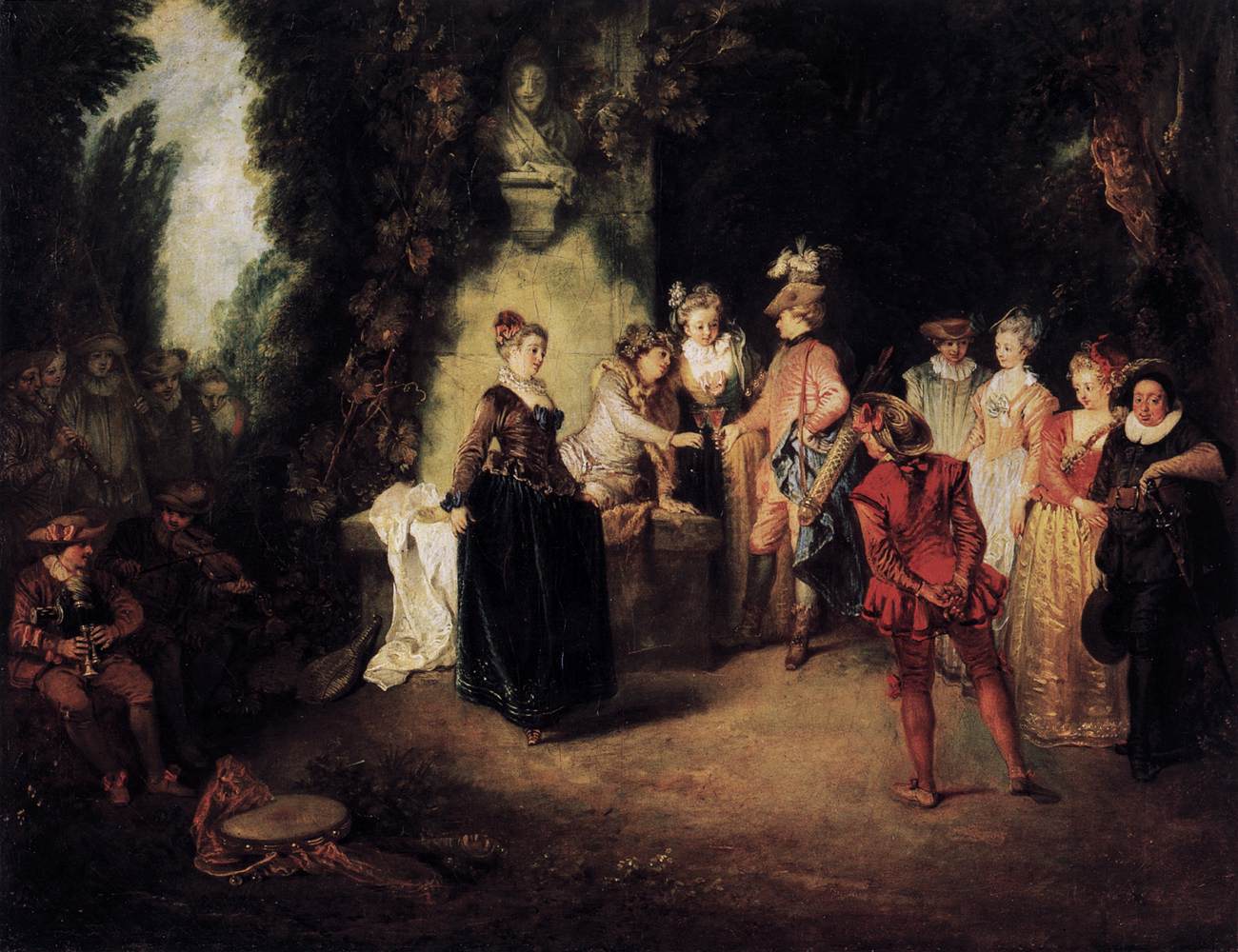
The French Comedy
1714
Oil on canvas, 37 x 48 cm
Staatliche Museen, Berlin
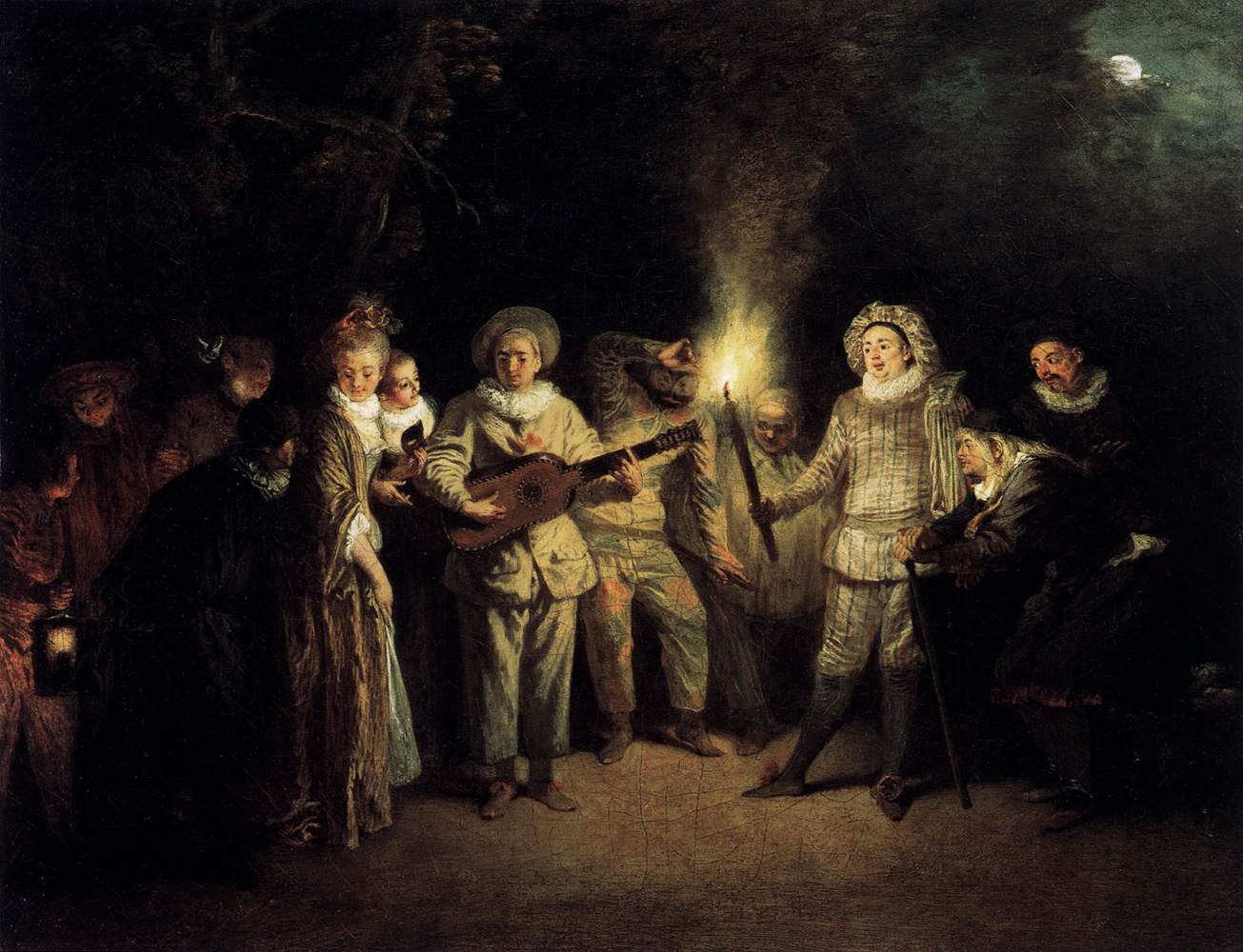
The Italian Comedy
1714
Oil on canvas
Staatliche Museen, Berlin

Three Studies of a Lady with a Hat
c. 1715
Chalk on paper, 210 x 313 mm
Musées Royaux des Beaux-Arts, Brussels
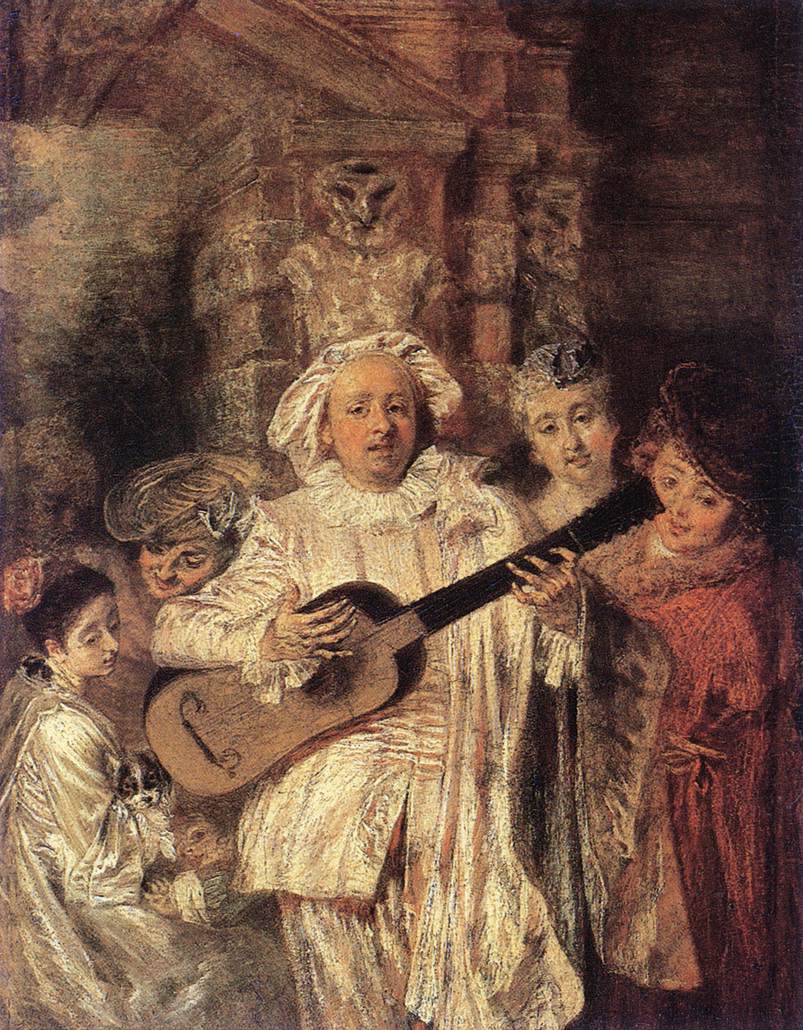
Gilles and his Family
c. 1716
Oil on wood, 28 x 21 cm
Wallace Collection, London
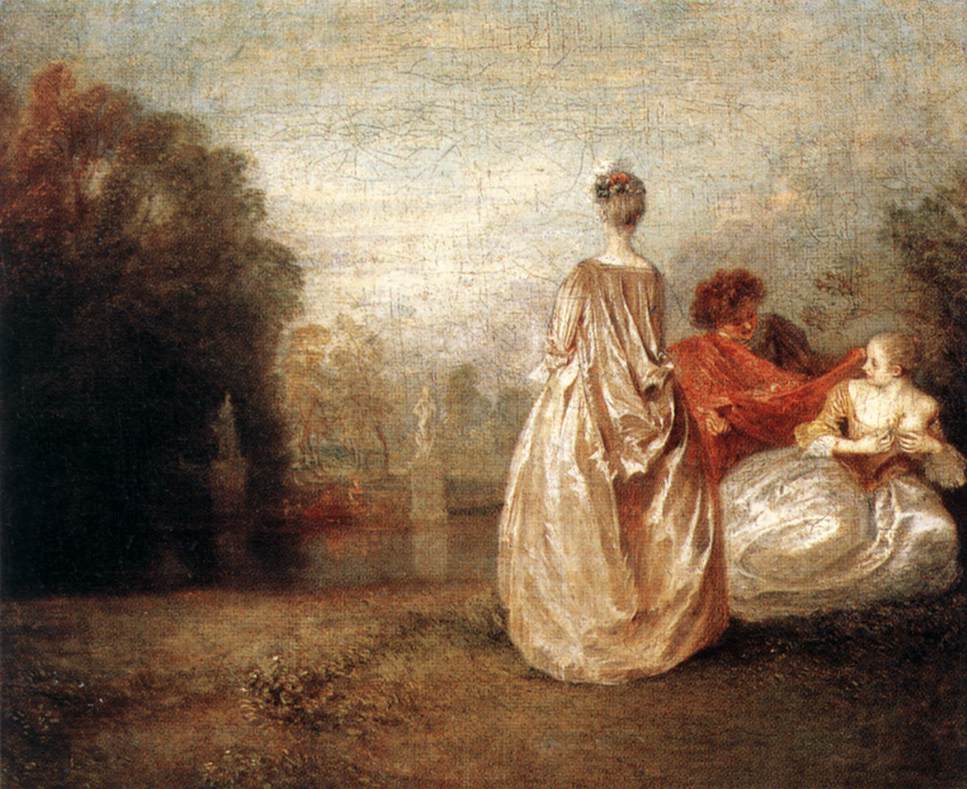
Two Cousins
c. 1716
Oil on canvas, 30 x 36 cm
Musée du Louvre, Paris
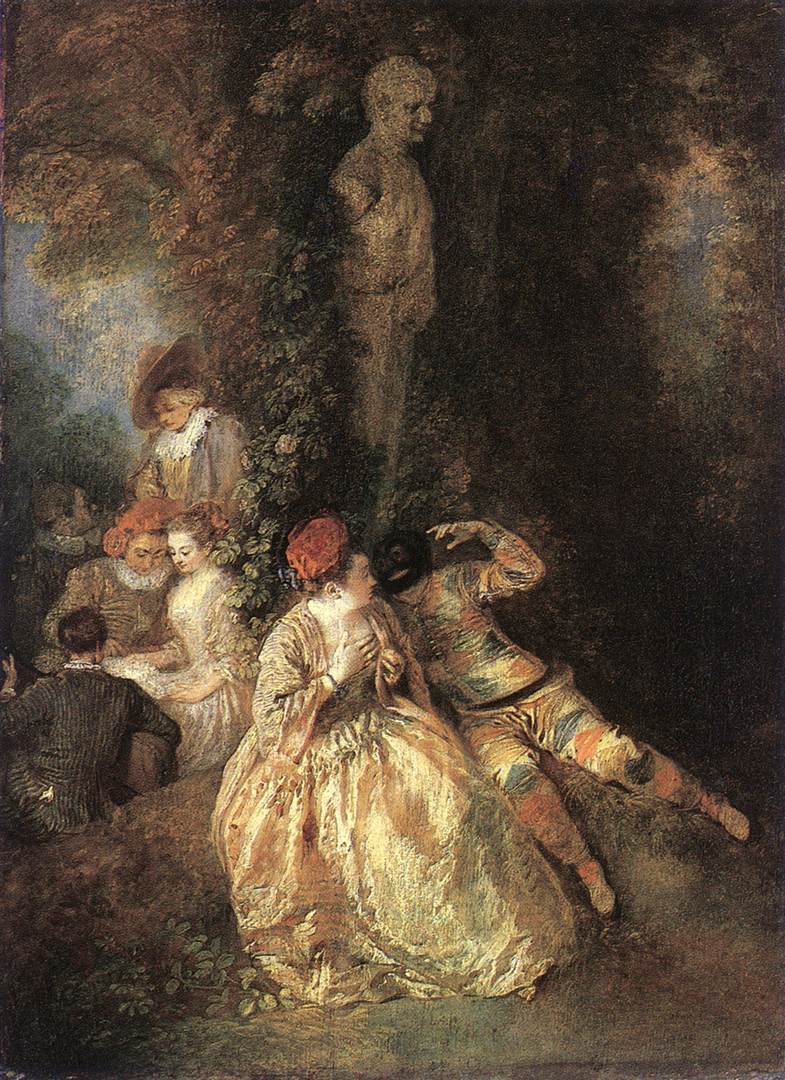
Harlequin and Columbine
1716-18
Oil on wood, 36 x 26 cm
Wallace Collection, London
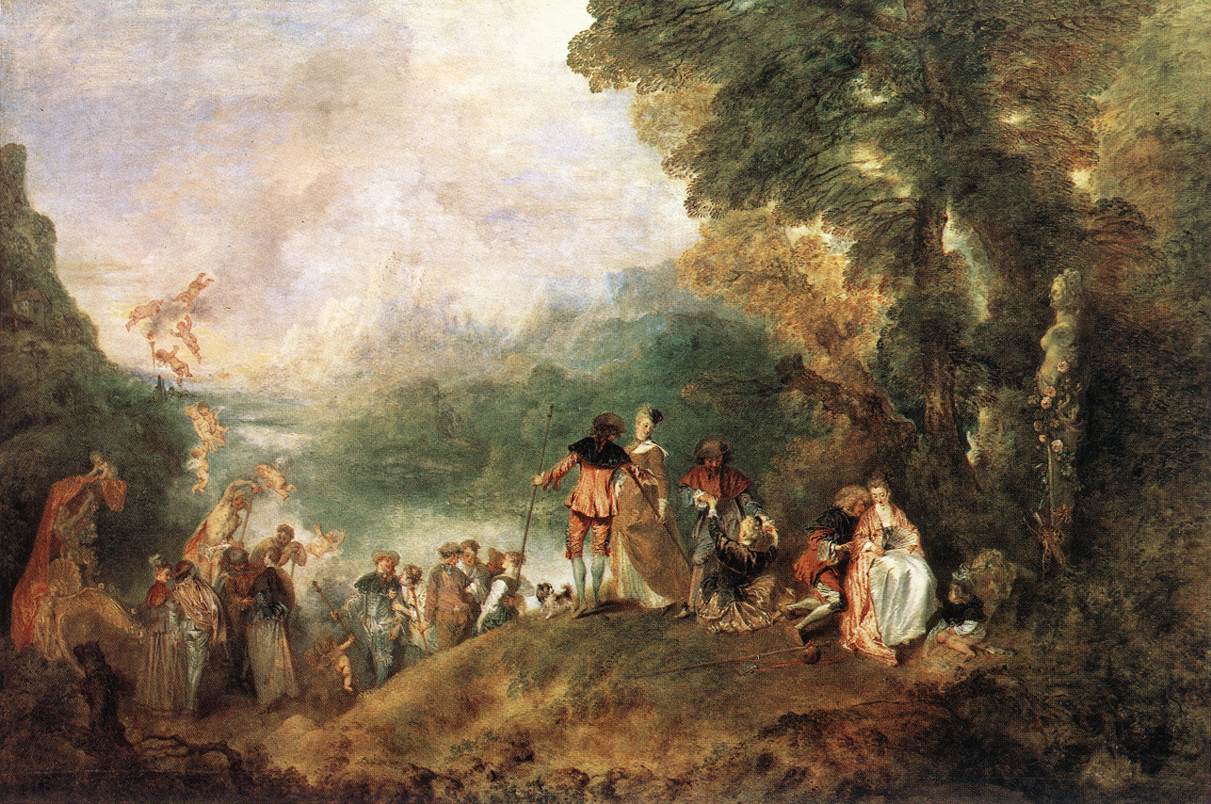
The Embarkation for Cythera
1717
Oil on canvas, 129 x 194 cm
Musée du Louvre, Paris
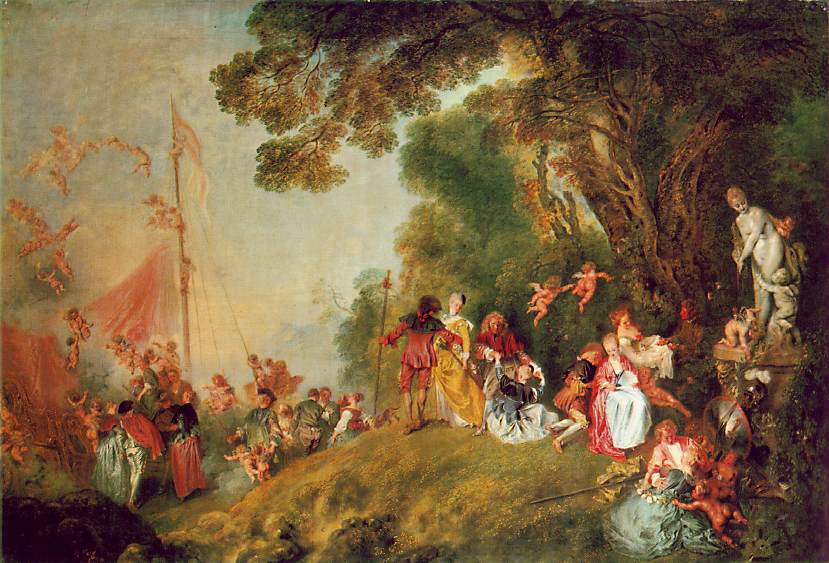
Pilgrimage to Cythera
1717
Oil on canvas,129 x 194 cm
Charlottenburg Palace, Berlin
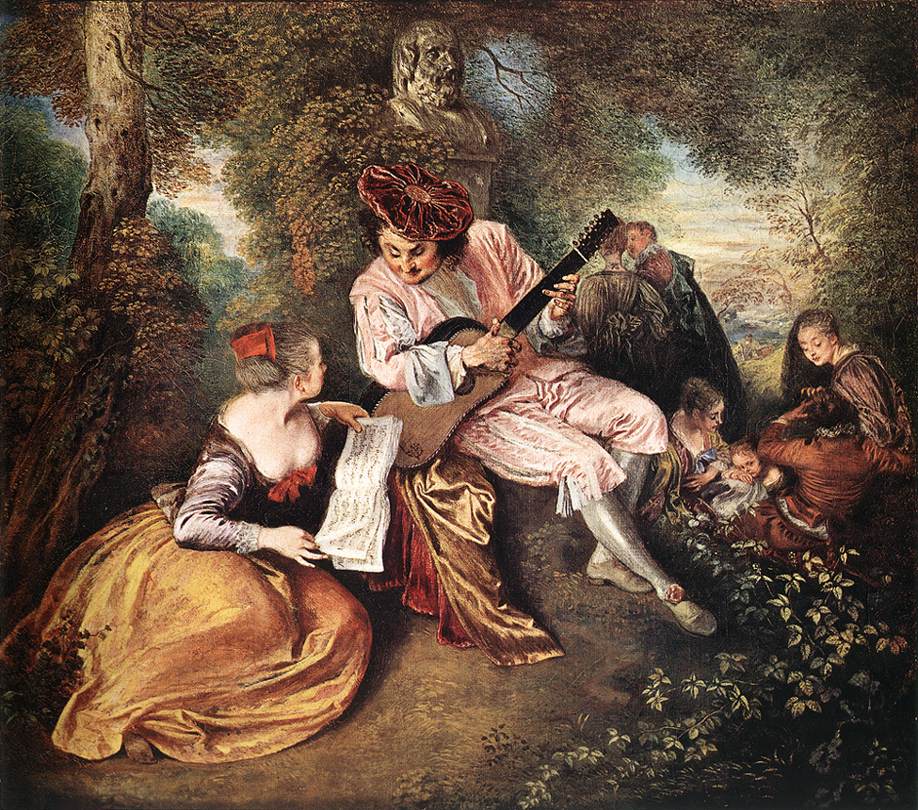
'La gamme d'amour' (The Love Song)
c. 1717
Oil on canvas, 51,3 x 59,4 cm
National Gallery, London
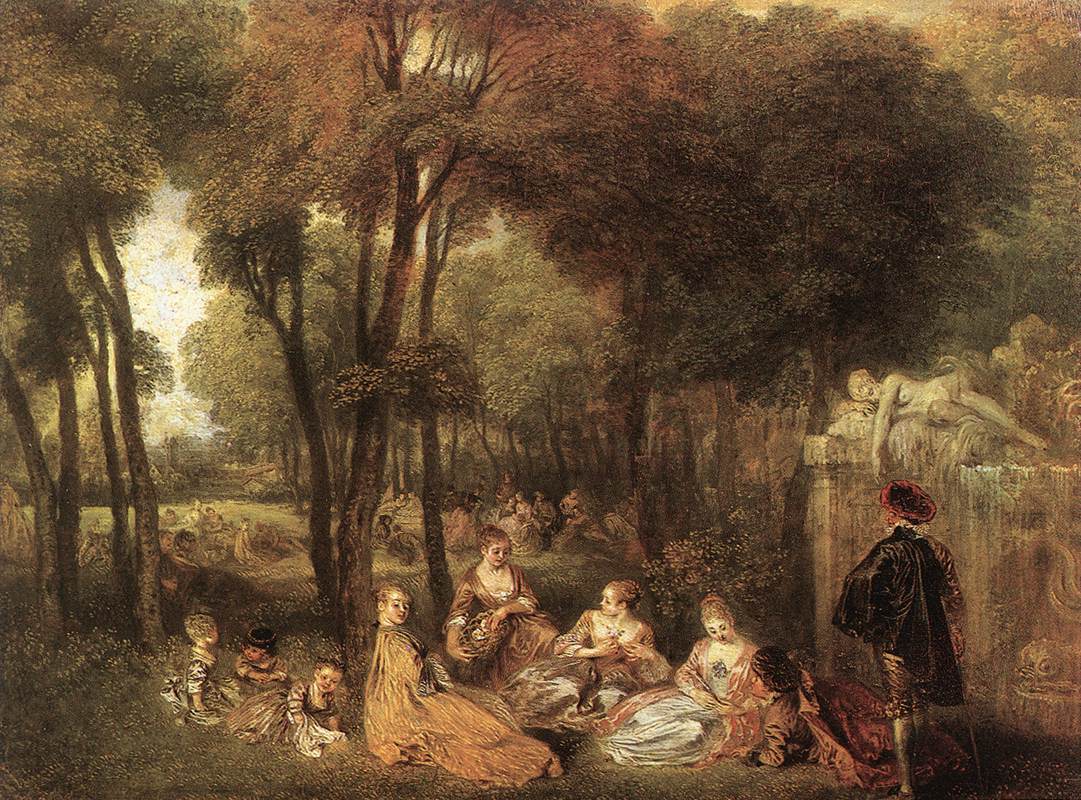
Les Champs Elysées
1717-18
Oil on wood, 31 x 42 cm
Wallace Collection, London
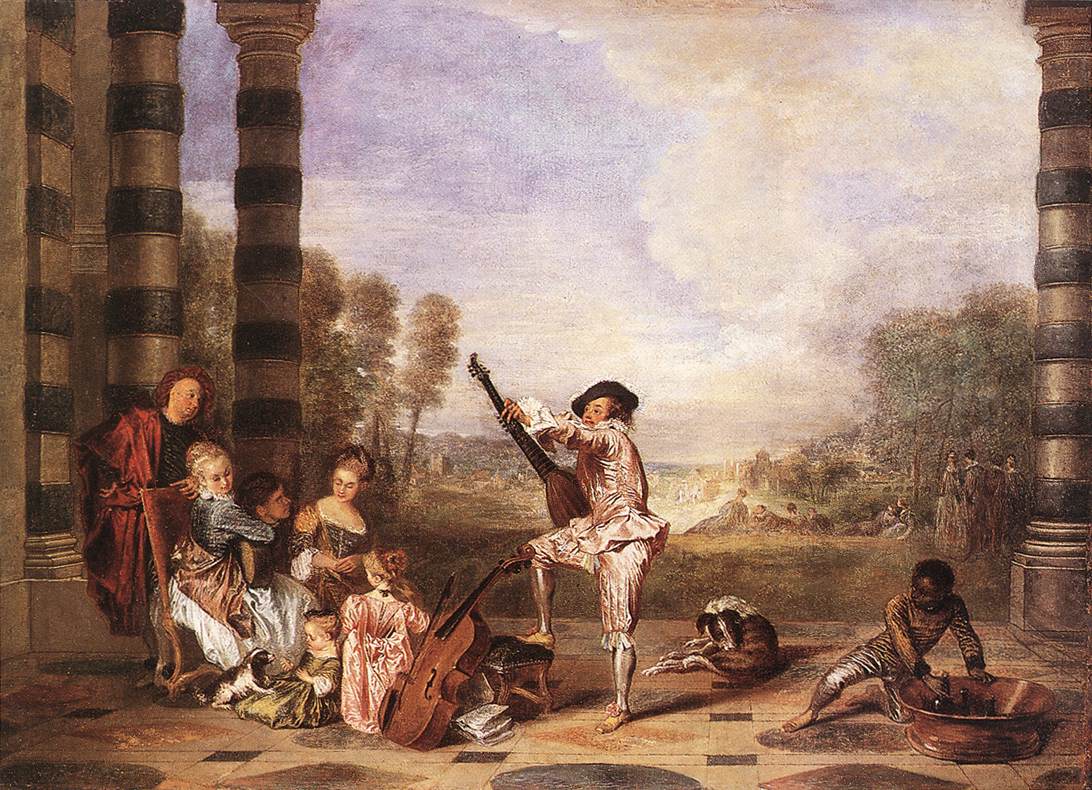
Les Charmes de la Vie (The Music Party)
c. 1718
Oil on canvas, 67 x 93 cm
Wallace Collection, London
Paintings 2
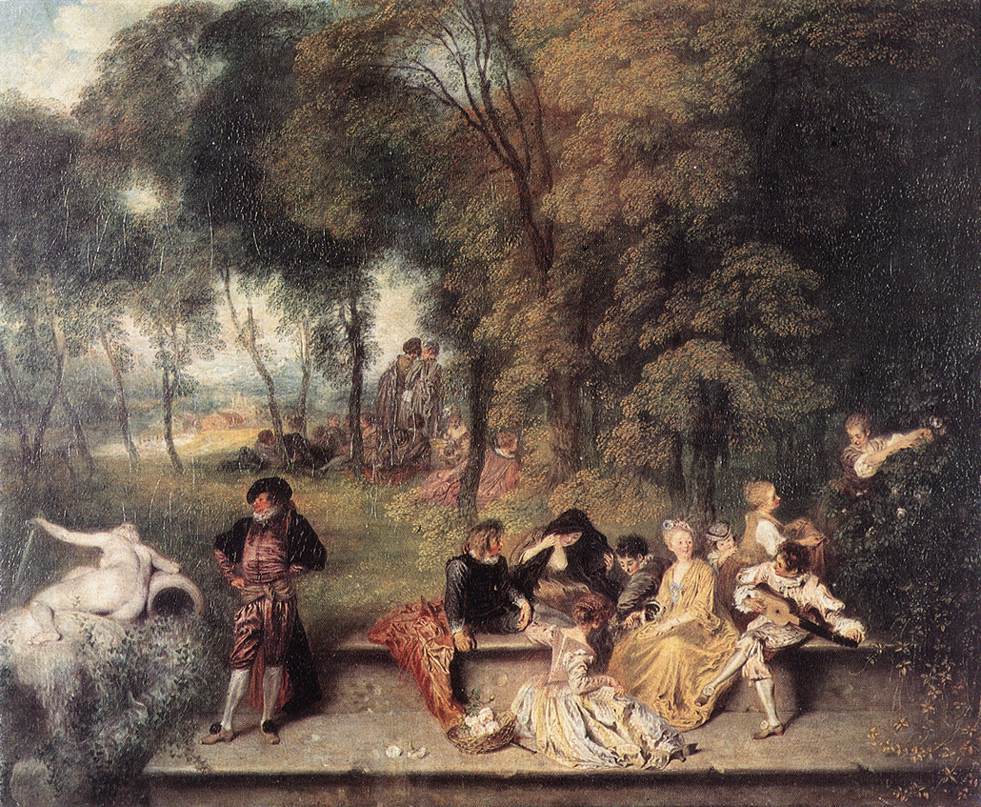
Merry Company in the Open Air
1716-19
Oil on canvas, 60 x 75 cm
Gemäldegalerie, Dresden
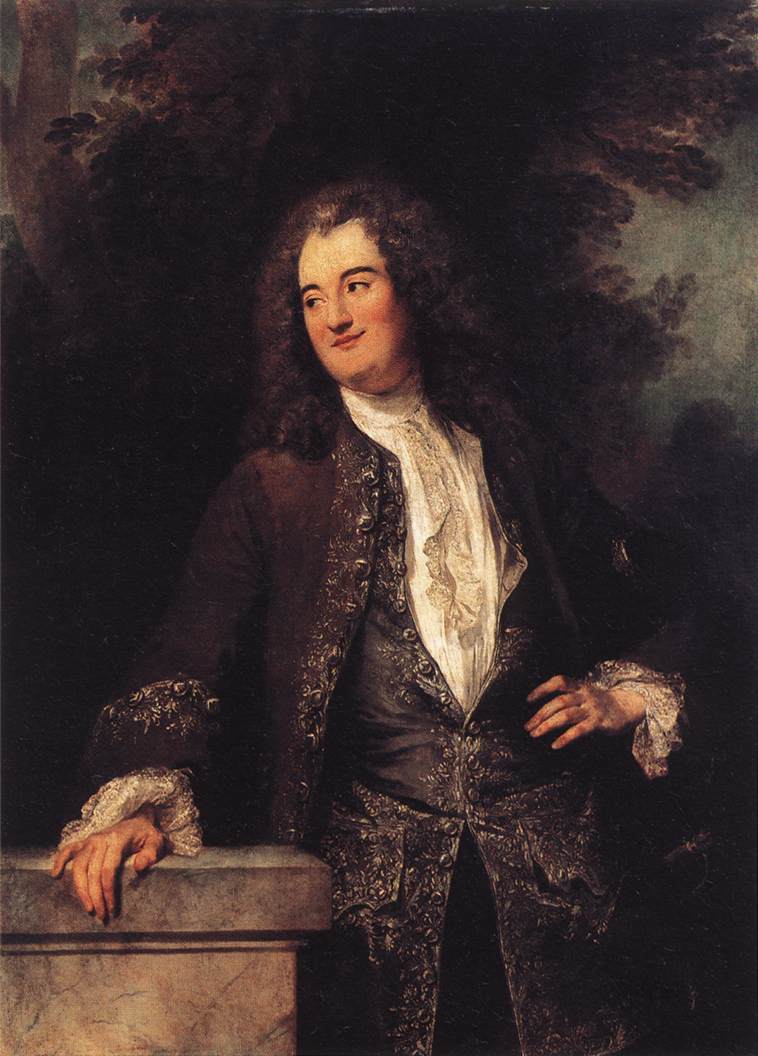
Portrait of a Gentleman
1715-20
Oil on canvas, 130 x 97 cm
Musée du Louvre, Paris
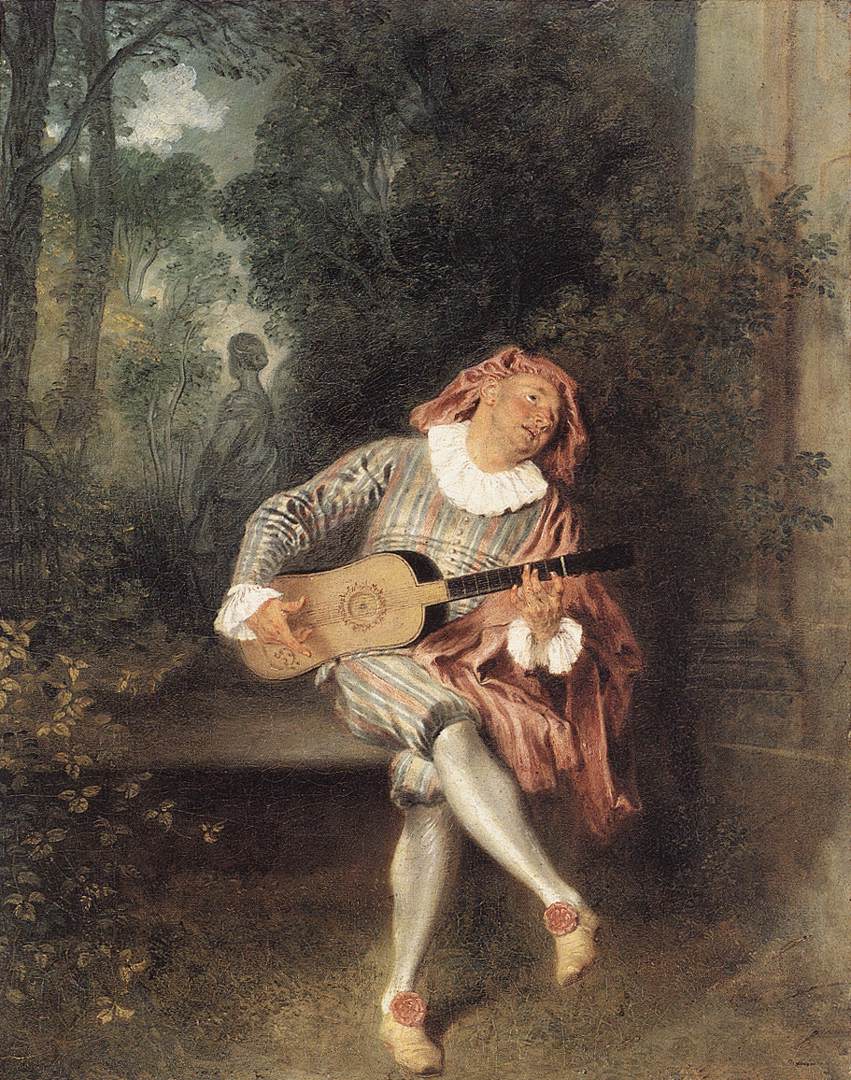
Mezzetin
1717-19
Oil on canvas, 55,2 x 43,2 cm
Metropolitan Museum of Art, New York

Head of a Man
Red and black chalk, 14,9 X 13 cm
Metropolitan Museum of Art, New York
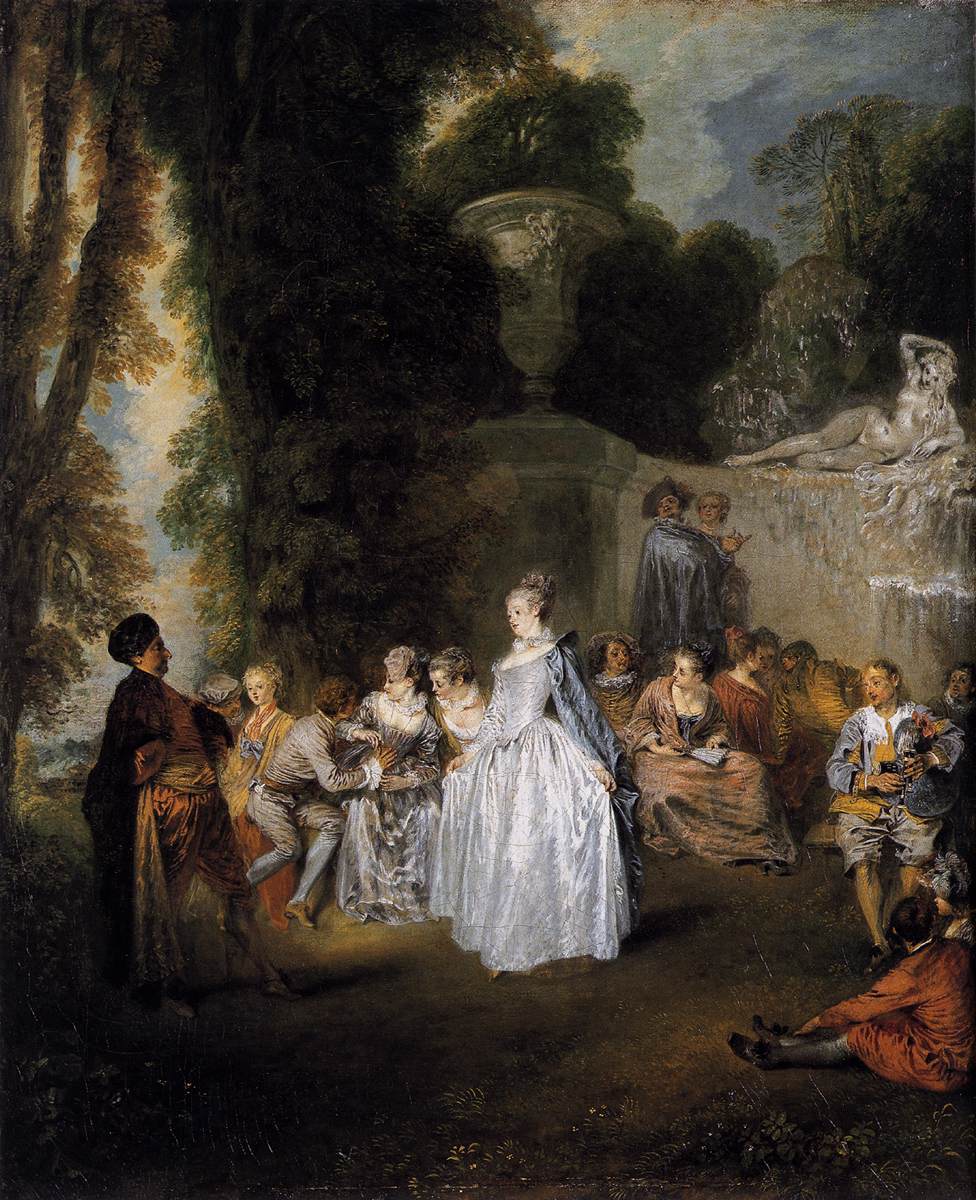
Fêtes Vénitiennes
1718-19
Oil on canvas, 56 x 46 cm
National Gallery of Scotland, Edinburgh
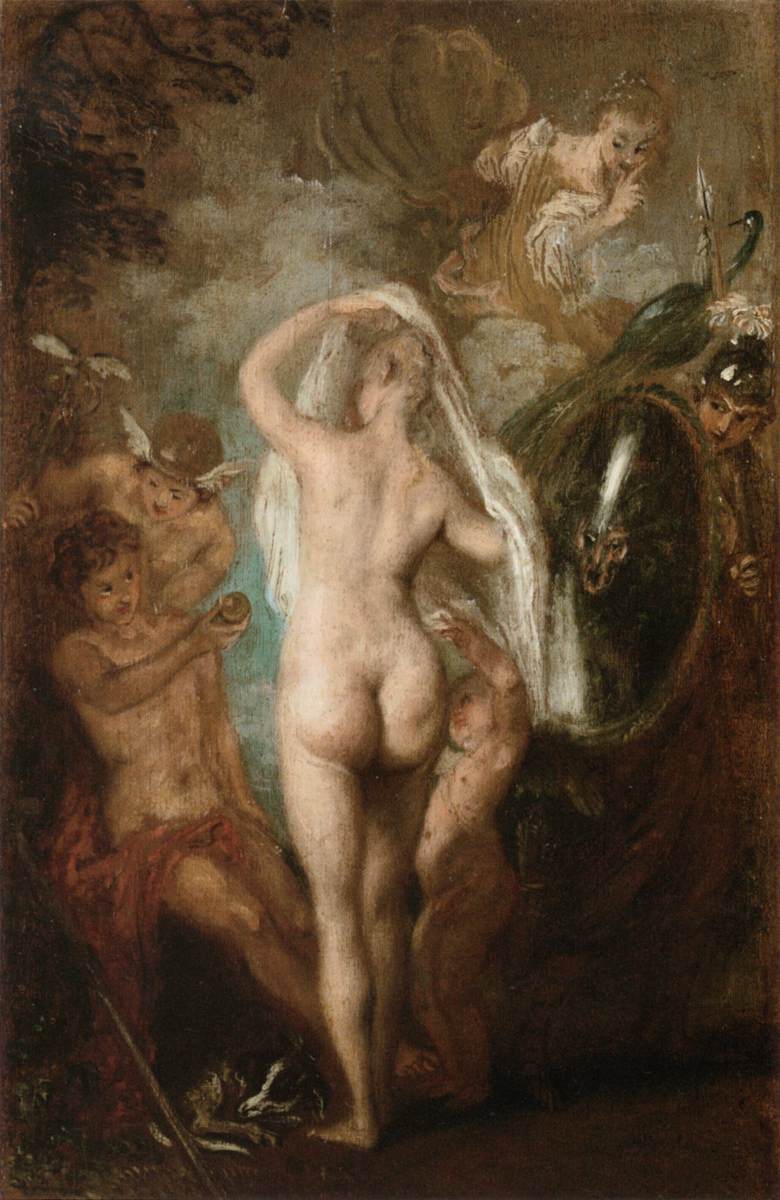
The Judgement of Paris
Oil on wood, 47 x 31 cm
Musée du Louvre, Paris
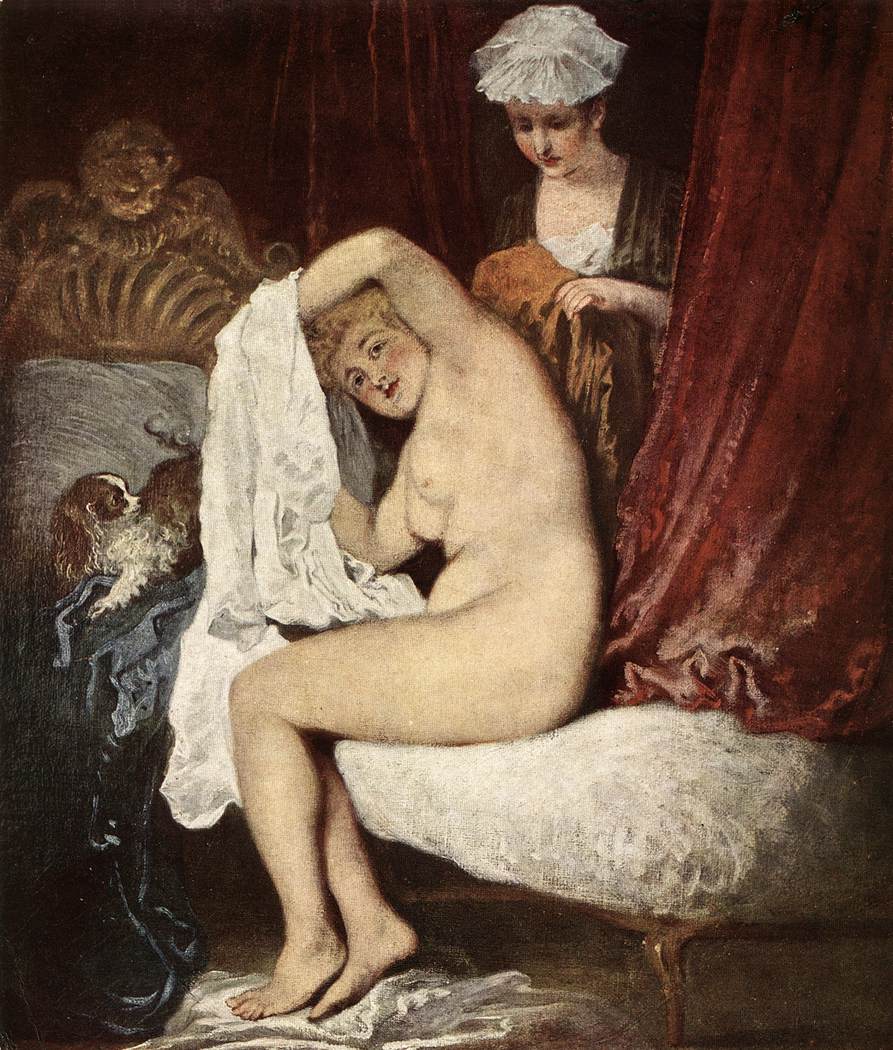
The Toilette
Oil on canvas
Wallace Collection, London
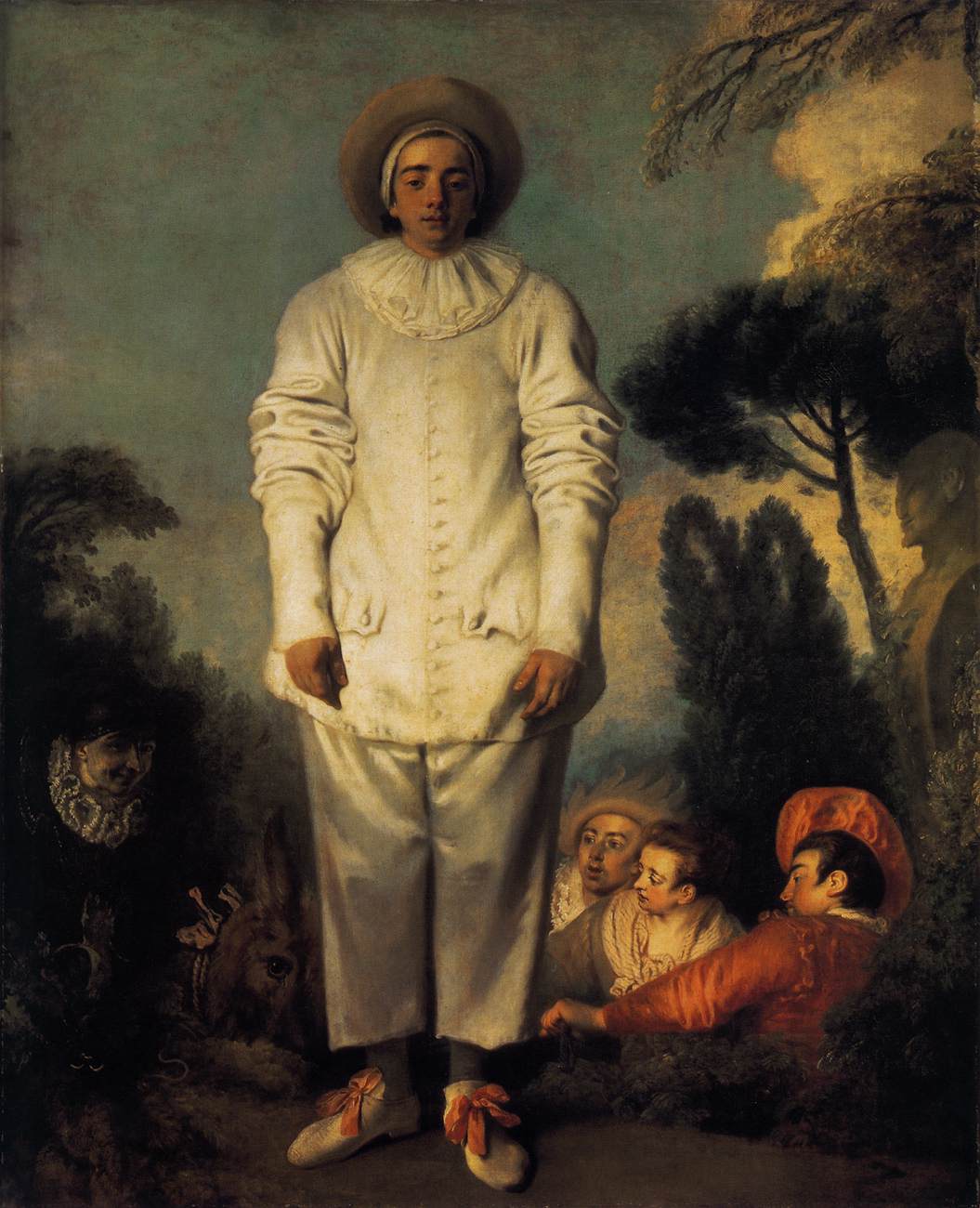
Gilles
1718-20
Oil on canvas, 184,5 x 149,5 cm
Musée du Louvre, Paris
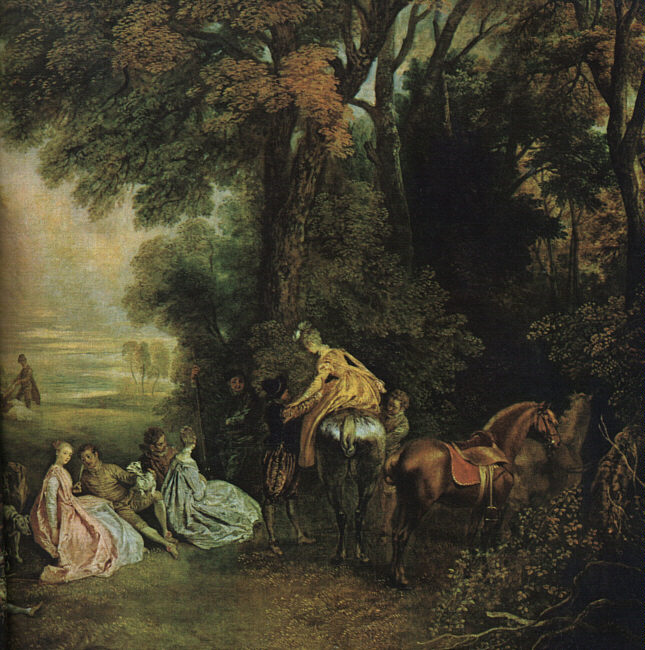
A Halt During the Chase
1720
Oil on canvas
Wallace Collection, London
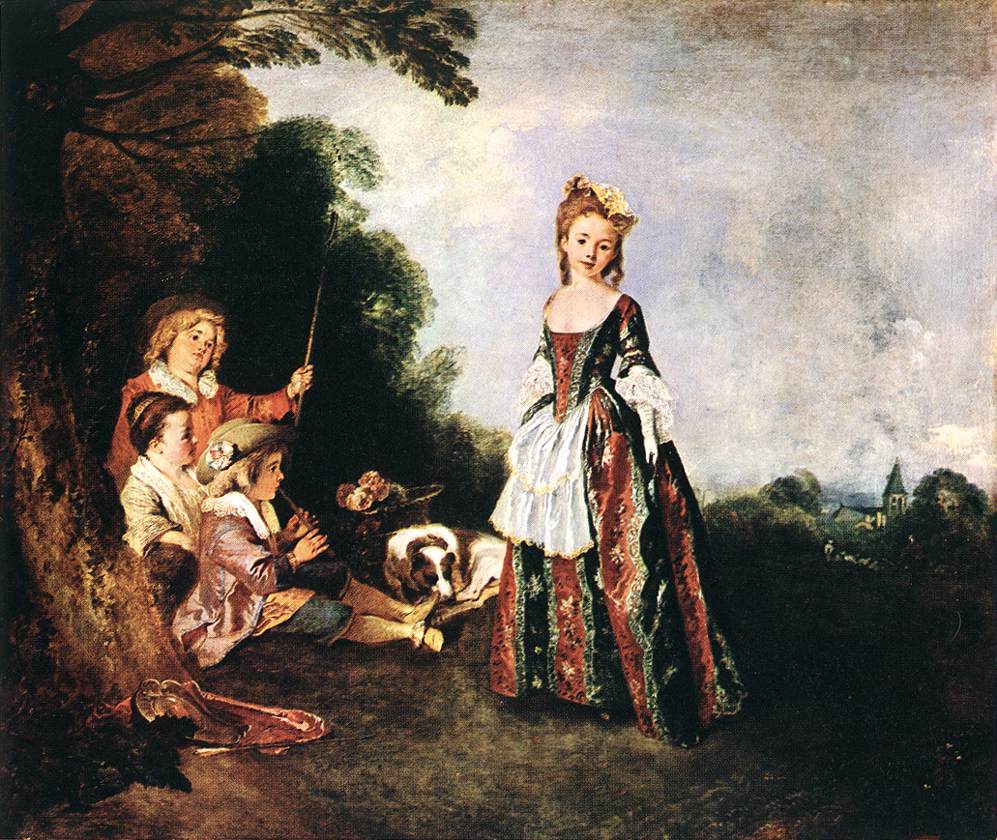
The Dance
1716-18
Oil on canvas, 97 x 116 cm
Staatliche Museen, Berlin
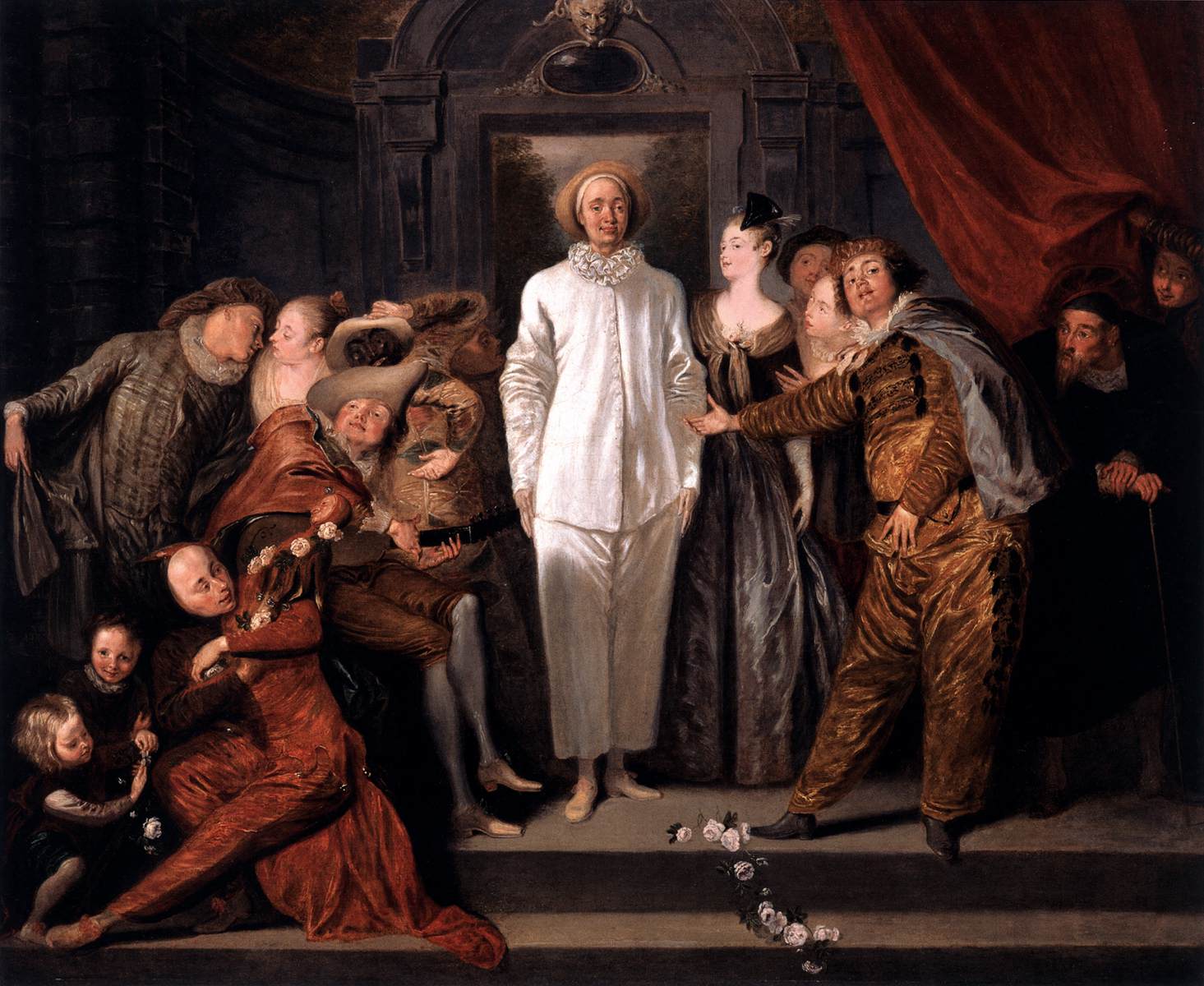
Italian Comedians
c. 1720
Oil on canvas
National Gallery of Art, Washington
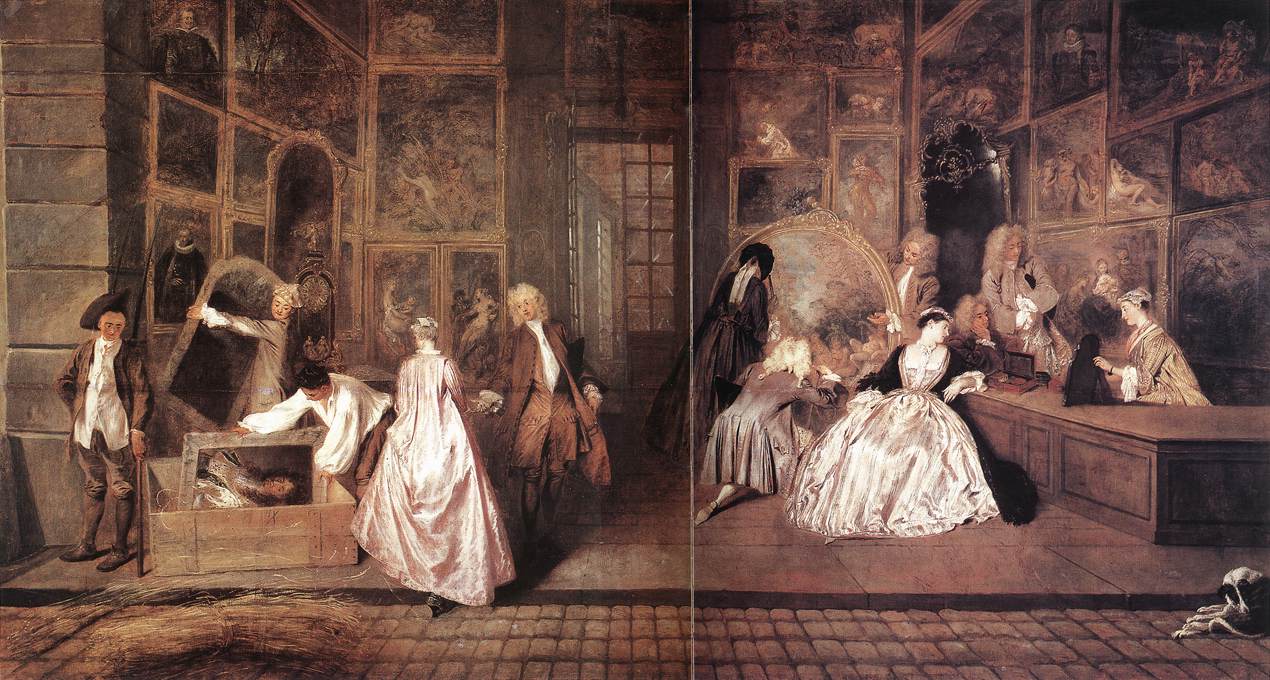
L'Enseigne de Gersaint
1720
Oil on canvas, 163 x 306 cm
Staatliche Museen, Berlin
(참고자료)
The greatest French painter of his period and one of the key figures of Rococo art. He was born at Valenciennes, which had passed to France from the Spanish Netherlands only six years before his birth, and he was regarded by contemporaries as a Flemish painter. There are indeed strong links with Flanders in his art, but it also has a sophistication that is quintessentially French.
He moved to Paris in about 1702 and c. 1703-07 he worked with Gillot, who stimulated his interest in theatrical costume and scenes from daily life. Soon afterwards he joined Claude Audran, Keeper of the Luxembourg Palace, and thus had access to Rubens's Marie de Médicis paintings, which were of enormous influence on him, even though Rubens's robustness was far removed from the fragile delicacy that characterized Watteau's art. Rubens was one of the prime inspirations for the type of picture with which Watteau is most associated - the fête galante, in which exquisitely dressed young people idle away their time in a dreamy, romantic, pastoral setting. The tradition of lovers in a parkland setting goes back via Giorgione to the medieval type known as the Garden of Love, but Watteau was the first painter to make the theme his own, and his individuality was recognized by his contemporaries.
In 1717 he submitted a characteristic work, The Pilgrimage to the Island of Cythera (Louvre, Paris; a slightly later variant is in Schloss Charlottenburg, Berlin), as his reception piece to the Academy, and owing to the difficulty of fitting him into recognized categories was received as a 'peintre de fêtes galantes', a title created expressly for him. He was, indeed, a highly independent artist, who did not readily submit to the will of patrons or officialdom, and the novelty and freshness of his work delivered French painting from the yoke of Italianate academicism. creating a truly 'Parisian' outlook that endured until the Neoclassicism of David. Watteau's world is a highly artificial one (apart from scenes of love he took his themes mainly from the theatre), but underlying the frivolity is a feeling of melancholy, reflecting the certain knowledge that all the pleasures of the flesh are transient. This poetic gravity distinguishes him from his imitators, and parallels are often drawn between Watteau's own life and character and the content of his paintings. He was notorious for his irritable and restless temperament and died early of tuberculosis, and it is felt that the constant reminder of his own mortality that his illness entailed 'infected' his pictures with a melancholic mood.
In 1719 he travelled to London, almost certainly to consult the celebrated physician Dr Richard Mead, but the hard English winter worsened his condition. His early death came when he may have been making a new departure in his art, for his last important work combines something of the straightforward naturalism of his early pictures in the Flemish tradition with the exquisite sensitivity of his fêtes galantes: it is a shop sign painted for the picture dealer Edmé Gersaint and known as L' Enseigne de Gersaint (Staatliche Museen, Berlin, 1721 ).
Watteau was careless in matters of material technique and many of his paintings are in consequence in a poor state of preservation. A complete picture of his genius depends all the more, then, on his numerous superb drawings, many of them scintillating studies from the life. He collected his drawings into large bound volumes and used these books as a reference source for his paintings (the same figure often appears in more than one picture).
In spite of his difficult temperament, Watteau had many loyal friends and supporters who recognized his genius, and although his reputation suffered with the Revolution and the growth of Neoclassicism, he always had distinguished admirers. It is perhaps as a colourist that he has had the most profound influence. His method of juxtaposing flecks of colour on the canvas was carried further by Delacroix and later reduced to a science by Seurat and the Neo-Impressionists. Watteau's principal, but much inferior, followers were Lancret and Pater. He also had a nephew and a great-nephew (father and son) who worked more-or-less in his manner. They are both known as 'Watteau de Lille' after their main place of work - Louis-Joseph Watteau (1731-98) and François-Louis-Joseph Watteau (1758-1823).
http://cafe.daum.net/maylove520
|

 위대한 달리[Dali, Salvador]
위대한 달리[Dali, Salvador]  Bernard Charoy
Bernard Charoy 
 위대한 달리[Dali, Salvador]
위대한 달리[Dali, Salvador]  Bernard Charoy
Bernard Charoy